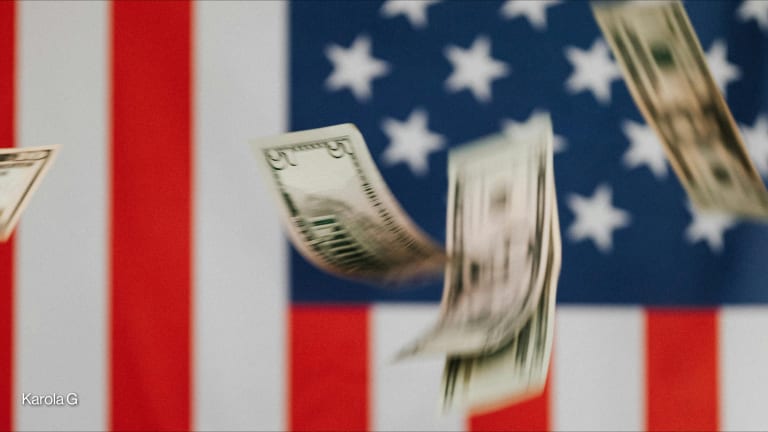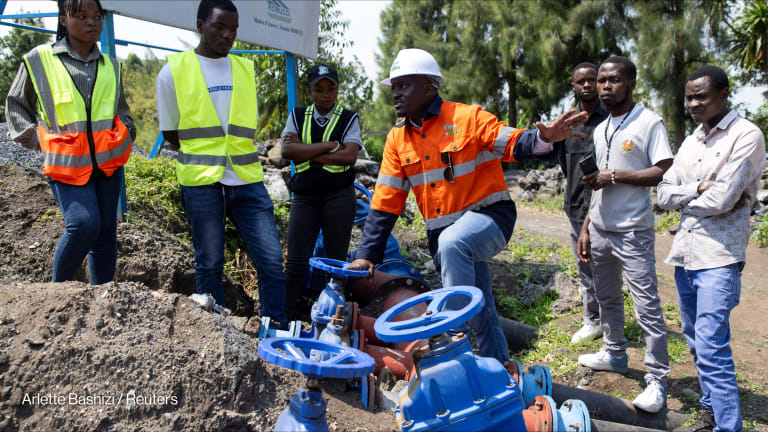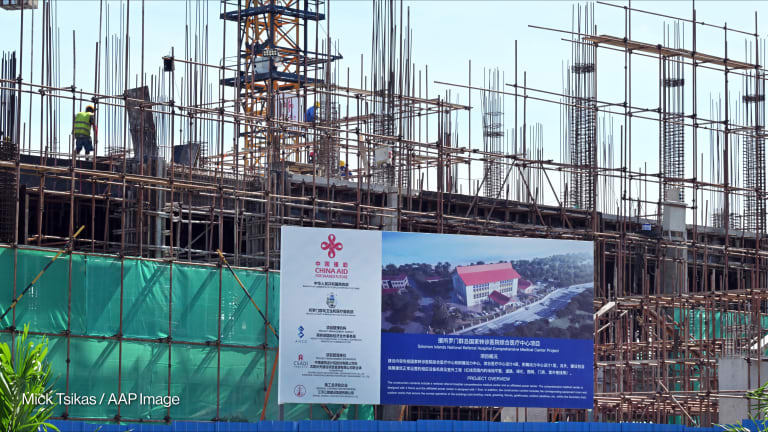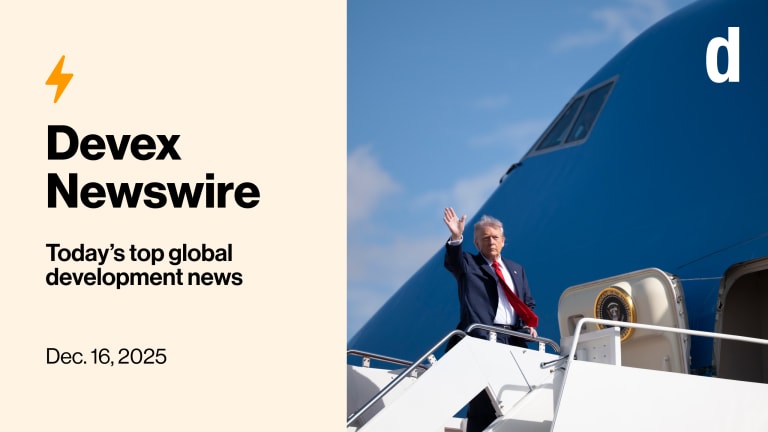How US aid spending changed over time — from Obama to Trump to Biden
The data shows that USAID's disbursements steadily increased between 2014 and 2022 — from $18.6 billion to $33.2 billion.
The development community is bracing itself for another Trump presidency, with many already preparing for drastic changes in policies and priorities that could undo advancements in key areas, such as climate change and reproductive health. But what exactly will change? One possible indicator is the last Trump administration. Although this time around, Trump looks likely to have more of a free hand, we can still draw conclusions from what happened before. Which sectors were prioritized? Which saw their budgets slashed? And how does it compare with other U.S. administrations? Before looking at this, it’s also important to understand the limits of presidential power. One might think that a sitting president might easily defund many of the causes championed by the opposing party. But even though the executive makes the budget request for the U.S. Agency for International Development, the appropriation still falls under the mandate of Congress. Furthermore, many initiatives, such as the U.S. President’s Emergency Plan for AIDS Relief, or PEPFAR, have enjoyed strong bipartisan support across presidencies. In the previous Trump administration, Congress acted as a check on many White House ambitions for foreign aid. But with a Republican Party shaped by eight years of Trump's agenda likely to take control of both chambers of Congress, this might not be the case now. In this analysis, we looked into the available data to see trends in USAID spending across sectors and geographies during Trump’s first presidency. USAID’s Dollars to Results website provides nine years’ worth of disbursement data that spans three administrations — from President Obama’s second term to President Biden’s early presidency. We also used the obligation data from USASpending to see USAID’s budget trends from fiscal year 2009 to 2024, which covers the entire Obama administration up to the last fiscal year of the Biden administration. For both datasets, we took the middle year — 2016 for dollars to results and 2018 for USASpending — as the base year for constant prices. This is the recommended methodology for decades of data, which takes into consideration recent economic fluctuations and social changes. How did the past administrations fund USAID? USAID’s annual disbursements steadily increased between 2014 and 2020 — from $18.6 billion to $21.5 billion. Spending skyrocketed in the next two years — likely driven by the war in Ukraine and the pandemic — rising to $26.2 billion in 2021 and $33.2 billion in 2022. The obligation data — which refers to money promised, rather than actually paid out — offers a slightly different trend. During Obama’s two terms, the agency’s obligations fluctuated, before experiencing a massive increase in Trump’s time. From $5.1 billion in 2017, obligations rose sharply to $14.2 billion in 2019 and $19.1 billion in 2020 — far from the $4.3 billion average obligation between 2008 and 2016. This upward trend continued in the Biden administration. Geography We looked into the average annual spending per recipient country during the three administrations — 2014 to 2016, which covers the last three years of the Obama administration; 2017 to 2020, under Trump; and 2021 to 2022, the first two years of Biden. The data reveals that while the ranking varied, almost the same fragile and conflict-ridden states received the largest disbursements in the three periods. Afghanistan was the top recipient country between 2014 and 2016, with an average of $1.5 billion. Then Jordan, with $718.2 million; Pakistan, with $690.1 million; and Ethiopia, with $680.9 million. Jordan was the priority between 2017 and 2020, receiving an average of $1.1 billion during that period. It overtook Afghanistan, ranked second, with $978.6 million. Ethiopia followed, with $766.8 million; South Sudan, with $652.7 million; and Nigeria, with $626.5 million. The largest spending between 2021 and 2022 went to Ukraine, worth nearly $4 billion. Ethiopia ranked next, with $1.2 billion; Yemen, with $929.8 million; and South Sudan, with $774 million. When we compared spending between 2014 and 2016, and 2017 and 2020, we saw that North Korea had the biggest increase among recipients — from an average of $3,120 during the Obama administration to $336,323 during Trump’s term. As you may remember, Trump made history when he met with North Korea’s Kim Jong-un in 2018. Other low- and middle-income countries enjoyed higher aid between 2017 and 2020. This included Equatorial Guinea, Gambia, Eritrea, Turkey, and Dominica. Overall, 91 countries received higher annual disbursements between 2017 and 2020 than in the previous period. On the flip side, 75 countries received less funding in the period. This included Bolivia, Sudan, Algeria, Guyana, and Cape Verde. Sectors During his first presidency, Trump attempted to shift U.S. foreign aid by deprioritizing key areas, including abortion and reproductive health, and withdrawing from important climate accords. Many are already anticipating drastic changes once Trump returns to the White House. With the Republican Party likely to control the legislative branch, these shifts could be easily implemented. However, these trends were not clearly identified during Trump’s previous administration. Similar to our analysis of USAID’s geographical spending, the same sectors enjoyed support across presidencies. HIV was the priority between 2014 and 2016, with an average funding of $3.9 billion. Then emergency response, with $3.3 billion; basic health, with $1.4 billion; and government and civil society, with nearly $1.4 billion. Emergency response overtook HIV between 2017 and 2020, with $4.6 billion versus $3.7 billion. Then, Government and civil society and basic health followed, with $1.7 billion each. Emergency response and HIV were also the top sectors between 2021 and 2022, with $6.5 billion and $5.3 billion, respectively. When we looked into changes between the periods 2014 and 2016 and 2017 and 2020, we found that funding for 16 sectors rose while 15 sectors experienced cuts. Digital communications infrastructure saw the largest increase, at 231.5%. Then secondary education, with a 106.7% hike; multisectoral activities, with 85.1%; general health, with 51.1%; and emergency response, with 40.2%. On the other hand, transport and storage recorded the steepest decline, at 75.9%. Industry followed, with 54%; other social infrastructure and services, with 39.6%; and education, with 27.4%. Other affected sectors included those that Trump vowed to defund during his campaign: Maternal and child health and family planning, with 10% less funding, and general environmental protection, with 18.5% less.
The development community is bracing itself for another Trump presidency, with many already preparing for drastic changes in policies and priorities that could undo advancements in key areas, such as climate change and reproductive health.
But what exactly will change?
One possible indicator is the last Trump administration. Although this time around, Trump looks likely to have more of a free hand, we can still draw conclusions from what happened before. Which sectors were prioritized? Which saw their budgets slashed? And how does it compare with other U.S. administrations?
This story is forDevex Promembers
Unlock this story now with a 15-day free trial of Devex Pro.
With a Devex Pro subscription you'll get access to deeper analysis and exclusive insights from our reporters and analysts.
Start my free trialRequest a group subscription Printing articles to share with others is a breach of our terms and conditions and copyright policy. Please use the sharing options on the left side of the article. Devex Pro members may share up to 10 articles per month using the Pro share tool ( ).
Miguel Tamonan is a Senior Development Analyst at Devex, where he analyzes data from public and private donors to produce content and special reports for Pro and Pro Funding readers. He has a bachelor’s degree in Political Science with a Major in International Relations from the Polytechnic University of the Philippines.








